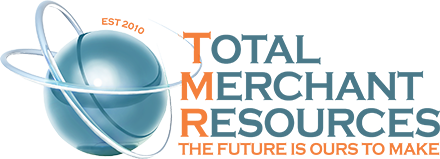
Leasing equipment can be a smart move for many businesses. Instead of spending a lot of money upfront, you can lease the equipment you need and pay for it over time. This allows you to access the latest technology and tools without the substantial initial cost, helping your business stay competitive and efficient.
Starting the process of leasing equipment might seem daunting, but breaking it down can make it easier. By following these steps, you can lease equipment confidently and ensure your business gets the tools it needs to thrive.
Assessing Your Equipment Needs
Before leasing equipment, you must know what your business truly needs. Start by listing the tasks you need to accomplish and the equipment required for each. Consider the type, size, and number of items you’ll need for daily operations. This will help you avoid leasing unnecessary items and ensure you have all the tools to run your business smoothly.
Talk to your team to get their input on what equipment they use most and what might improve their efficiency. Sometimes, the front-line people have the best insights into what’s needed. They can tell you which outdated equipment and new tools could make a big difference. Pay attention to their feedback to make an informed decision.
Next, evaluate the condition of your current equipment, if you have any. Is it outdated, frequently breaking down, or simply not meeting your needs? Knowing this helps you decide if it’s time for an upgrade. Once you have a clear idea of your needs, you can search for leasing options that match your requirements. Proper assessment ensures you spend your money wisely and lease equipment that adds value to your business.
Evaluating Leasing Options and Terms
Once you know what equipment you need, the next step is to evaluate different leasing options. Leasing terms can vary widely, so it’s essential to understand what each option offers before choosing. Here are some key factors to consider:
- Lease Length: How long is the lease term? Short-term leases may be more flexible but could be more expensive month to month. Long-term leases might offer lower monthly payments but lock you into a longer commitment.
- Payment Structure: Check the lease payments’ structure. Do they fit within your budget? Some leases may have lower monthly payments with a larger payment at the end, while others spread the cost evenly.
- Maintenance and Repairs: Find out who is responsible for maintaining and repairing the equipment. Some leasing agreements include maintenance, which can save you money and hassle in the long run.
- Upgrade Options: See if the lease allows you to upgrade to newer equipment as technology evolves. This can be a great way to keep your business current without additional costs.
- End-of-Lease Terms: Understand what happens at the end of the lease. Can you buy the equipment at a reduced price, renew the lease, or return it? Knowing your options helps you plan for the future.
By carefully evaluating these factors, you can choose a leasing option that suits your business needs and financial situation. Don’t rush this step—ensuring you get the best deal and avoid unexpected costs down the road is crucial.
Preparing Necessary Financial Documentation
Before leasing equipment, you must prepare the correct financial documents. Leasing companies will want to ensure that your business is stable and capable of making regular payments. Having your paperwork ready can speed up the lease approval process.
First, gather basic financial statements like your balance sheet, income statement, and cash flow statement. These documents provide a snapshot of your business’s economic health. They show your revenues, expenses, and how well you manage your money. Leasing companies use this information to assess your ability to make lease payments.
Next, prepare tax returns for the last couple of years. Tax returns help verify your income and see how your business has performed over time. They can also provide insight into your business’s long-term viability. Preparing personal and business tax returns is a good idea, especially for small business owners.
You might also need a business plan or financial projections. This is especially true for newer businesses or those with less established credit. A detailed business plan outlines your goals and strategies for reaching them. Financial projections can show expected income and expenses, giving the leasing company confidence in your future performance.
Having all these documents ready before you apply for a lease shows that your business is organized and financially responsible. This can help you get better lease terms and make the process smoother.
Choosing the Right Leasing Partner
Choosing the right leasing partner is a critical step. The right partner will provide the necessary equipment, offer fair terms, and support you throughout leasing. Here’s how to find the best fit for your business:
- Research Potential Partners: Start by researching leasing companies online. Look for companies with good reviews and solid reputations. Check their experience in your industry and their track record for customer satisfaction.
- Compare Offers: Get quotes from several companies and compare their offers. Look at the lease terms, payment plans, interest rates, and any additional fees. Make sure you understand all the costs involved.
- Check Flexibility: Some leasing companies offer more flexible terms. Ask about options for upgrading equipment, early termination, and adjustments to the lease. Flexible terms can be a significant advantage as your business grows.
- Assess Customer Service: Good customer service is vital. You want a partner who is responsive, helpful, and easy to work with. Test their customer service by asking questions and seeing how promptly and thoroughly they respond.
- Review Contract Terms: Carefully review all contract terms before signing. Ensure you know what you agree to, including installation, maintenance, and repairs responsibilities. Don’t hesitate to ask for clarification on any points you don’t understand.
Choosing the right leasing partner sets you up for a successful leasing experience. A good partner will help you get the necessary equipment with terms that fit your business.
Conclusion
Starting the process of leasing equipment can seem like a big task, but with the proper steps, it becomes manageable. Assessing your equipment needs ensures you only lease what you genuinely need. Understanding and evaluating leasing options helps you get the best terms for your budget. Preparing the necessary financial documentation shows potential partners that you’re a responsible and capable business. Finally, choosing the right leasing partner is critical to a smooth and successful experience.
Leasing equipment allows you to access the latest tools and technology without the high upfront cost. This can help your business stay competitive, efficient, and ready for growth. By following these steps, you ensure that you make the best decisions for your business’s future.
Ready to take the next step in leasing equipment and total merchant processing? Contact Total Merchant Resources today. Our team can help you find the best leasing options and guide you. Let us help you get the equipment you need to succeed.



